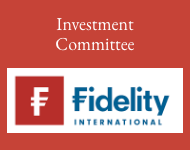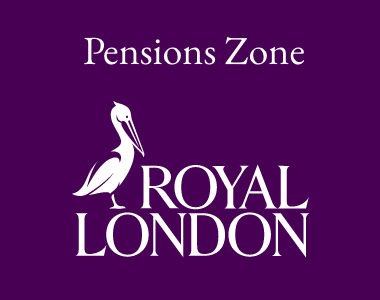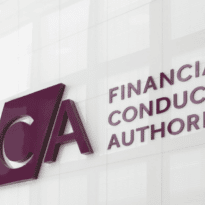Jason Hollands, Managing Director at wealth management firm Evelyn Partners, considers steps cash savers can take to achieve a better return after tax through investment into gilts.
Gilts – bonds issued by the UK Government when it borrows money on the financial markets – have been hitting the headlines in recent weeks, with a surge in yields to levels not seen since the late 1990s posing a risk to Chancellor’s fiscal plans.
While the rise in borrowing costs for the UK Government is clearly bad news for the Chancellor, it creates an opportunity for cautious investors and savers, and especially for those subject to the higher rates of tax.
More than two million UK savers are expected to pay tax on their cash savings interest in the 2024/25 tax year – three times more than in the 2021/22 tax year.
This striking trend has been driven by the freezing of personal savings allowances, which in real terms are now much reduced, as well as higher interest rates currently available on savings accounts.
This now means that many people with a decent level of savings outside of ISAs and pensions risk an unwelcome tax bill.
When the Personal Savings Allowances (PSA) of £1,000 and £500 pa respectively for basic and higher rate taxpayers was introduced many years ago at a time of rock-bottom interest rates, most savers didn’t have to worry about paying tax on the interest from their cash savings as – even as a higher rate taxpayer – you’d have needed very large deposits to test those levels.
But with savings rates now at around 4.5-5.0%, hundreds of thousands more savers are either paying tax on their cash savings interest, or close to doing so. Moreover, more savers are paying tax at the higher rates: the Office of Budget Responsibility estimates that 3.2 million people will be drawn into the higher and additional rates tax bands by 2028-29 due to the thresholds freeze.
The number of additional rate taxpayers was estimated at 862,000 in the 2023/24 tax year and is growing rapidly following the reduction in the threshold at which the 45% tax rate kicks in to £125,140 in April 2023. This expanding cohort needs to be especially careful about how much cash savings they hold outside of tax-exempt wrappers, as they get no tax-free interest under the PSA and a 45% marginal tax rate will dramatically eat into returns.’
The ‘obvious’ tactics
The obvious shelter is a cash ISA but some savers might quickly use up their annual £20,000, or prefer to use the allowance for longer-term investments such as stocks and shares, so it is important to have other strategies to minimise the amount paid in tax on cash savings. For married couples and civil partners, this can include “interspousal transfers” – which means shifting cash savings to whichever partner might be subject to a lower tax band, or who is a non-taxpayer, and also utilising their PSA and ISA allowance.
But for those already maximising ISAs and with sizeable savings in a taxable environment that they don’t need immediate access to, investing in gilts is an attractive option, especially now that yields are at levels not seen for many years.
The gilts option
Many people who are unfamiliar with gilts and the wider bond markets might assume when reading about the ‘yields’ available, that these are equivalent to interest payments:
However, in the case of gilts and bonds that have already been issued and are traded on the financial markets, the “yields” available will represent a combination of the expected capital returns if held until maturity as well as the interest they pay out, which is then annualised.
Investing in gilts directly – rather than through funds – offers investors who hold them until maturity a very predictable return, because investors know the current price they can buy at and the amount they will eventually be repaid at a known date in the future, as well as the interest payments they will receive in between.
Gilts that were issued during the period of ultra-low interest rates pay very low levels of fixed interest, but these are currently available at nominal prices significantly below the level they will be redeemed at on maturity. This means that the lion share of the “yield” they offer will come through a capital gain rather than the level of fixed interest (or “coupon”) that they pay.
Crucially, gilts have a key feature in that any capital gains an investor makes on them is exempt from capital gains Tax. This makes gilts with low coupons which are trading below their redemption prices especially attractive for higher and additional rate taxpayers with savings outside of ISAs and pensions compared to cash savings.
For example, there is currently available a gilt that is due to mature on 31 January 2028 at £100. While it only pays a low coupon of 0.125% on the nominal price it was issued at – because it was originally issued in June 2020 when UK interest rates were at an all-time low – the cost of this Gilt on the market is currently £88.689, so an investor buying today knows they will make a capital gain if they hold to maturity in three years when it redeems at £100. The expected gain, combined with the small amount of fixed interest that will be paid out, in this case equates to an annualised “yield to maturity” of 4.124%.
Unlike the seemingly higher cash interest rates available which are variable and may decline over the next few years, this return is predictable and can be effectively locked-in now.
But further, as most of this “yield” will come from a tax-free capital gain, this is very attractive to a higher or additional rate taxpayer compared to a cash savings account. The after-tax return each year for a 40% taxpayer for this gilt is equivalent to 4.07% and for a 45% taxpayer it is 4.06%. To get such a post-tax return from a cash savings account would require a 40% taxpayer to find an effective headline interest rate of 6.78% from a bank or building society and for those subject to the 45% tax-band, they would need secure a pre-tax interest rate of 7.389%.
Such rates on cash savings accounts are obviously not available, nor anything close.
While strictly speaking an investment, gilts are considered to be extremely safe if bought at issue, or as here below the price they will be redeemed at, as the prospect of the UK Government not honouring its obligations to lenders is tiny. However, gilts prices will move up and down on the secondary market as views change on the outlook for inflation, interest rates and investors weigh up the relative attractions of lending to the UK Government versus other issuers. Recent weeks have seen volatility across global bond markets.
Investing directly in the bond markets, including gilts, can therefore be fairly complex territory as prices and yields can change from day to day, so expert help is required: those considering gilt investments, whether it is to reduce their tax liability on cash savings or to establish a flow of income in retirement, should therefore speak to a wealth manager about building a portfolio.
Evelyn Partners will typically include exposure to gilts and other types of bonds within the diversified portfolios we manage for clients, but it is also possible to build a “gilt ladder” – a selection of holdings that will mature across differing years to cover expected future liabilities. The firm’s investment managers also construct low risk Cash & Cautious Bond portfolios of short-dated gilts and bonds, money market funds and T-bills, aimed at generating returns that will beat a savings account.
Of course, it is not only import to compare expected returns net of tax when comparing cash interest rates and yields on investments like gilts, but also to bear in mind any fees that will be incurred.






























